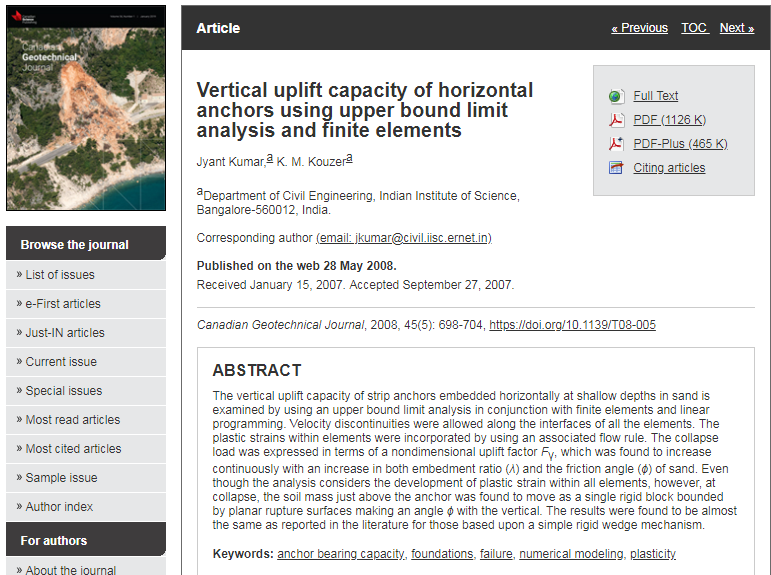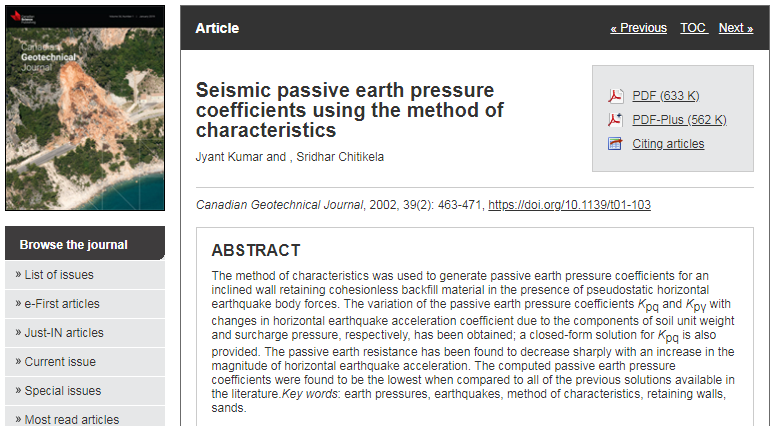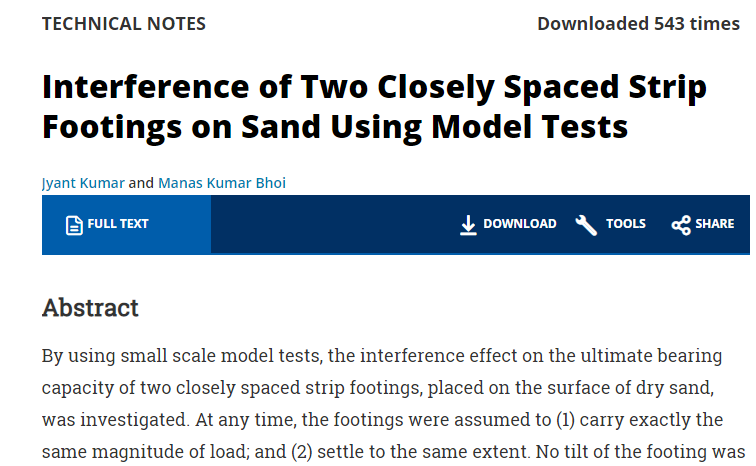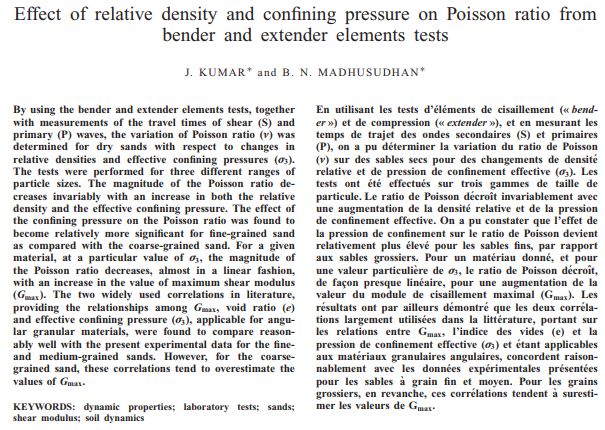Vertical uplift capacity of horizontal anchors using upper bound limit analysis and finite elements
The vertical uplift capacity of strip anchors embedded horizontally at shallow depths in sand is examined by using an upper bound limit analysis in conjunction with finite elements and linear programming. Velocity discontinuities were allowed along the interfaces of all the elements. The plastic strains within elements...
Nγ for rough strip footing using the method of characteristics
By using the method of characteristics, the bearing capacity factor N was computed for a rough strip footing. The analysis was performed by considering a curved nonplastic wedge under the foundation base bounded by curved slip lines being tangential to the base of the footing at its either edge and inclined at an angle...
Seismic passive earth pressure coefficients using the method of characteristics
The method of characteristics was used to generate passive earth pressure coefficients for an inclined wall retaining cohesionless backfill material in the presence of pseudostatic horizontal earthquake body forces. The variation of the passive earth pressure coefficients K pq and K p with changes in horizontal earthqu...
Interference of Two Closely Spaced Strip Footings on Sand Using Model Tests
By using small scale model tests, the interference effect on the ultimate bearing capacity of two closely spaced strip footings, placed on the surface of dry sand, was investigated. At any time, the footings were assumed to (1) carry exactly the same magnitude of load; and (2) settle to the same extent. No tilt of the ...
Effect of relative density and confining pressure on Poisson ratio from bender and extender elements
By using the bender and extender elements tests, together with measurements of the travel times of shear (S) and primary (P) waves, the variation of Poisson ratio () was determined for dry sands with respect to changes in relative densities and effective confining pressures (3). The tests were performed for three differ...
























